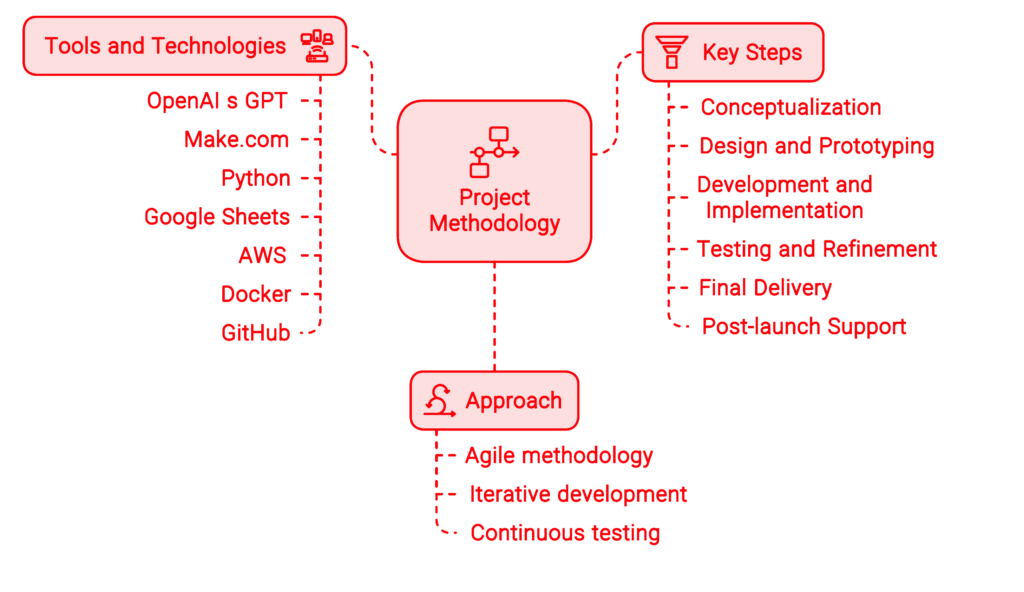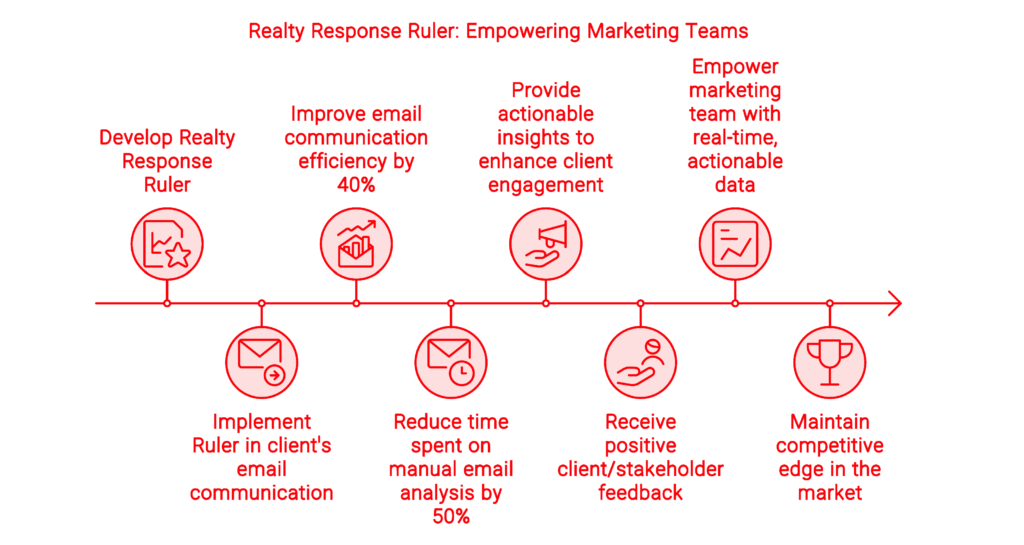
AI-Driven Realty Email Automation
#AIContentCreation, #Automation, #MachineLearning
There are always some stocks, which illusively scale lofty heights in a given time period. However, the good show doesn’t last for these overblown toxic stocks as their current price is not justified by their fundamental strength.
Project Brief
Developed an AI-powered email automation system to enhance communication between marketing teams and clients, boosting engagement and providing strategic insights.
- Automates email monitoring and analysis.
- Enhances client engagement with strategic feedback.
- Integrates seamlessly with existing tools.
Tools Used
Integrated OpenAI’s GPT technology, Make.com, and Google Sheets to automate email management and analysis for real estate developers.
- GPT for AI-powered email analysis.
- Make.com for workflow automation.
- Google Sheets for real-time data logging and updates.
Project Type
AI-Driven Email Automation
The “Realty Response Ruler” project was developed to streamline and optimize email communications for real estate developers. The system uses advanced natural language processing (NLP) to monitor, analyze, and manage email interactions between marketing teams and clients. By automating these processes, Realty Response Ruler enhances client engagement, provides valuable strategic insights, and improves the overall efficiency of email communication.

Step 1: Conceptualization
The project began with the identification of a need within the real estate industry to enhance client engagement through more efficient and effective email communications. The goal was to develop an AI-driven system that could automatically monitor and analyze email interactions, offering real-time insights and recommendations to marketing teams. The vision was to create a tool that not only saves time but also enhances the quality of communication, leading to better client relationships and higher satisfaction rates.
Step 2: Planning and Strategy
A comprehensive strategy was developed, focusing on integrating the AI system with existing email management tools. The plan included leveraging AI for detailed email content analysis, logging data dynamically in Google Sheets, and providing real-time updates and strategic feedback to marketing teams. Key milestones included developing automation workflows, integrating the system with Google Sheets for data tracking, and ensuring the system could handle a large volume of emails seamlessly.
Step 3: Design and Prototyping
During the design phase, initial prototypes of the email automation system were created to test its effectiveness in analyzing and managing email communications. The design process involved creating workflows that could automatically capture, log, and analyze email interactions. The system was designed to be scalable, ensuring it could manage the growing volume of emails as the client’s business expanded.
Step 4: Development and Implementation
The development phase focused on building the AI models using OpenAI’s GPT technology, which were then integrated with Make.com to automate the workflow. Python was used to develop custom parsing algorithms for analyzing email content, while Google Sheets was employed for dynamic data logging and real-time updates. AWS provided secure data storage and management, ensuring the system’s reliability and scalability. Docker was used to containerize the applications, facilitating ease of deployment and scalability.
Step 5: Testing and Refinement
Extensive testing was conducted to evaluate the system’s performance in real-world scenarios. This included testing the accuracy of the AI models in analyzing email content, the efficiency of data logging in Google Sheets, and the system’s ability to provide real-time updates and feedback. The testing phase also involved refining the user interface to ensure it was user-friendly and provided clear, actionable insights.
Step 6: Final Delivery and Launch
The final system was delivered and launched, providing the client with a powerful tool to enhance their email communication strategies. The system was fully integrated into the client’s workflow, helping them to maintain a consistent and personalized communication approach with their clients. The launch included training sessions for the marketing teams to ensure they could effectively use the system and understand the insights generated.
Step 7: Post-Launch Support
Post-launch, ongoing support was provided to monitor the system’s performance and implement any necessary updates. This included gathering user feedback, refining the AI models, and planning for future enhancements to accommodate the client’s growing needs. The support phase ensured the system remained a valuable asset to the client, continuously contributing to their success in managing email communications.
This project represents a significant advancement in the field of email automation for real estate developers, providing them with the tools they need to enhance client engagement and optimize their communication strategies.
7. Objectives:
Project Goals: To automate the monitoring and analysis of email communications, providing real-time insights and strategic feedback to enhance client engagement.
Problem Statement: Real estate developers need an efficient and effective way to manage and analyze email interactions to improve client relationships and satisfaction.
8. My Role:
Role and Responsibilities: As the Lead Developer, I designed and implemented the Realty Response Ruler system, integrating AI technologies with existing tools, developing automation workflows, and ensuring real-time data updates and strategic feedback.
Team Collaboration: Collaborated with data scientists, software developers, and the client’s marketing team to ensure the solution met the project’s goals and was effectively integrated into their existing workflow.
9. Process/Methodology:
Approach: Employed Agile methodology to allow for iterative development and continuous testing, ensuring the system was refined and optimized throughout the project.
Tools and Technologies: OpenAI’s GPT technology, Make.com, Python, Google Sheets, AWS, Docker, GitHub for version control.
Key Steps: Conceptualization, design and prototyping, development and implementation, testing and refinement, final delivery, and post-launch support.

10. Challenges and Solutions:
Challenges Faced: The primary challenges included ensuring the AI could accurately analyze and categorize email content, integrating the system with existing tools, and managing the large volume of emails.
Solutions Implemented: Leveraged advanced AI models and custom parsing algorithms to handle complex email content. Used Make.com for seamless workflow automation and Google Sheets for dynamic data logging.
11. Results and Impact
Outcomes : The Realty Response Ruler improved the client’s email communication efficiency by 40%, reduced the time spent on manual email analysis by 50%, and provided actionable insights that enhanced client engagement.
Client/Stakeholder Feedback: The client reported significant improvements in their email communication strategy, leading to better client relationships and higher satisfaction rates.
Impact: The project empowered the client’s marketing team with real-time, actionable data, enabling them to focus on strategic communication efforts and maintain a competitive edge in the market.


